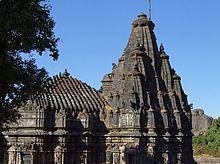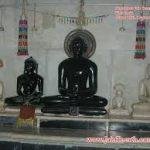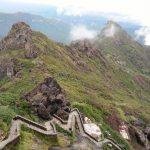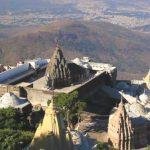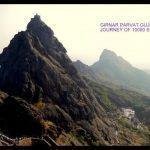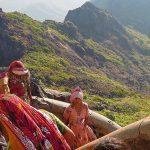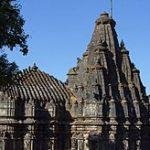Girnar, Junagadh, Gujarat
| Date built: | – |
|---|---|
| Deity: | – |
| Architectural style: | – |
| Major festivals | – |
| Locale: | – |
| District:: | Junagadh |
| Address: | – |
| Phone | – |
nar, also known as Girinagar (‘city-on-the-hill’) or RevatakParvata, is a group of mountains in the Junagadh District of Gujarat, India.
The Girnar mountain ranges are considered to be sacred. It is an important pilgrimage site for both Jains and Hindus, who gather here during the Girnar Parikrama festival. Girnar is one of the five major ‘tirthas’ attributed to the ‘panchkalyanakas’ of various ‘Jain tirthankaras’. Mount Girnar is a major igneous plutonic complex which intruded into the basalts towards the close of the Deccan Trap period. The rock types identified in this complex are gabbros (tholeiitic and alkalic), diorites, lamprophyres, alkali-syenites and rhyolites. The parent gabbroic magma is shown to have given rise in sequence to diorites, lamprophyres and alkali-syenites. The rhyolite, though earlier considered a product of differentiation, is now believed to be an independent magma without any genetic link with the gabbro and its variants.
Architecture
On entering the gate, the large enclosure of the temples is on the left, while to the right is the old granite temple of Man Singh, Bhoja Raja of Kutch, and farther on the much larger one of Vastupala. Built into the wall on the left of the entrance is an inscription in Sanskrit. Some 16 Jain temples here form a sort of fort on the ledge at the top of the great cliff, but still 600 feet below the summit. The largest temple is the Neminath temple, standing in a quadrangular court 195 x 130 feet. It was built from 1128 to 1159. It consists of two halls (with two porches, called by the Hindus mandapams), and a shrine, which contains a large black image of Neminath, the 22d Tirthankar. Around the shrine is a passage with many images in white marble. Between the outer and inner halls are two shrines. The outer hall has two small raised platforms paved with slabs of yellow stone, covered with representations of feet in pairs called padukas, which represent the 2452 feet of the Gandharas, first disciples of Tirthankaras. On the west of this is a porch overhanging the perpendicular scarp. On two of the pillars of the mandapam are inscriptions dated 1275, 1281, and 1278—dates of restoration. The enclosure is nearly surrounded inside by 70 cells, each enshrining a marble image, with a covered passage in front of them lighted by a perforated stone screen.
The principal entrance was originally on the east side of the court, but it is now closed, and the entrance from the court in Khengar’s Palace is that now used. There is a passage leading into a low dark temple, with granite pillars in lines. Opposite the entrance is a recess containing two large black images; in the back of the recess is a lion rampant, and over it a crocodile in bas-relief. Behind these figures is a room from which is a descent into a cave, with a large white marble image which is mostly concealed by priests. It has a slight hollow in the shoulder, said to be caused by water dropping from the ear, whence it was called Amijhara, “nectar drop.” Neminath is said to have attained Moksha from Girnar so this place is frequently noted in Jain literature.
In the North porch are inscriptions which state that in Samwat 1215 certain Thakurs completed the shrine, and built the Temple of Ambika.
After leaving this there are three temples to the left that on the south side contain a colossal image of Rishabha Deva, the first Tirthankar, exactly like that at Palitana temples, called Bhim-Padam. On the throne of this image is a slab of yellow stone carved in 1442, with figures of the 24 Tirthankars.
Opposite this temple is a modern one to Panchabai. West of it is a large temple called Malakavisi or Meravasi, sacred to Parshwanath, built in the 15th century.North of this is another temple of Parshwanath, which contains a large white marble image canopied by a cobra, whence it is called Sheshphani, an arrangement frequently found in the South India but uncommon in North India. It bears a date of 1803. The last temple to the north is Kumarpal’s temple, built by Chaulukya king Kumarapala, which has a long open portico on the west. It appears to have been destroyed by the Muslims, and restored in 1824 by Hansraja Jetha. These temples are along the west face of the hill, and are all enclosed.[4]
Outside to the north is the Bhima Kunda, a tank 70 feet by 50 feet, in which Hindus bathe. Immediately behind the temple of Neminath is the triple one temple, Vastupala-Tejpala temple, erected by the brothers Tejapala and Vastupala (built in 1177), who also built the Dilwara Temples on Mount Abu. The plan is that of three temples joined together. The shrine has a blue black image of Mallinath, the 19th Tirthankar. Farther north is the temple of Samprati Raja, This temple is probably one of the oldest on the hill, dating to 1158. Samprati is said to have ruled at Ujjain in the end of the third century BCE, and to have been the son of Kunala, Ashoka’s third son.
Fourteen of Ashoka’s Major Rock Edicts, dating to circa 250 BCE, are inscribed on a large boulder that is housed in a small building located outside the town of Junagadh on Saurashtra peninsula in the state of Gujarat, India. It is located on Girnar Taleti road, at about 2 km (1.2 mi) far from Uperkot Fort easterly, some 2 km before Girnar Taleti. An uneven rock, with a circumference of seven meters and a height of ten meters, bears inscriptions etched with an iron pen in Brahmi script in a language similar to Pali and date back to 250 BCE, thus marking the beginning of written history of Junagadh.
On the same rock there are inscriptions in Sanskrit added around 150 CE by Mahakshatrap Rudradaman I, the Saka (Scythian) ruler of Malwa, a member of the Western Satraps dynasty (see Junagadh rock inscription of Rudradaman).The edict also narrates the story of Sudarshan Lake which was built or renovated by Rudradaman I, and the heavy rain and storm due to which it had broken.
Another inscription dates from about 450 CE and refers to Skandagupta, the last Gupta Empire.
The protective building around the edicts was built in 1900 by Nawab Rasool Khan of Junagadh State at a cost of Rs 8,662. It was repaired and restored in 1939 and 1941 by the rulers of Junagadh. The wall of the structure had collapsed in 2014.
A much smaller replica of these Girnar edicts has been positioned outside the entrance of the National Museum in Delhi.
Legend / Local stories
Mount Girnar is a major igneous plutonic complex which intruded into the basalts towards the close of the Deccan Trap period. The rock types identified in this complex are gabbros (tholeiitic and alkalic), diorites, lamprophyres, alkali-syenites and rhyolites. The parent gabbroic magma is shown to have given rise in sequence to diorites, lamprophyres and alkali-syenites. The rhyolite, though earlier considered a product of differentiation, is now believed to be an independent magma without any genetic link with the gabbro and its variants.
Photo Gallery
How to Reach:
Contact Details
Official Address

